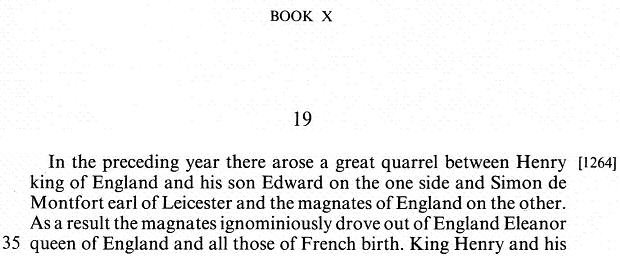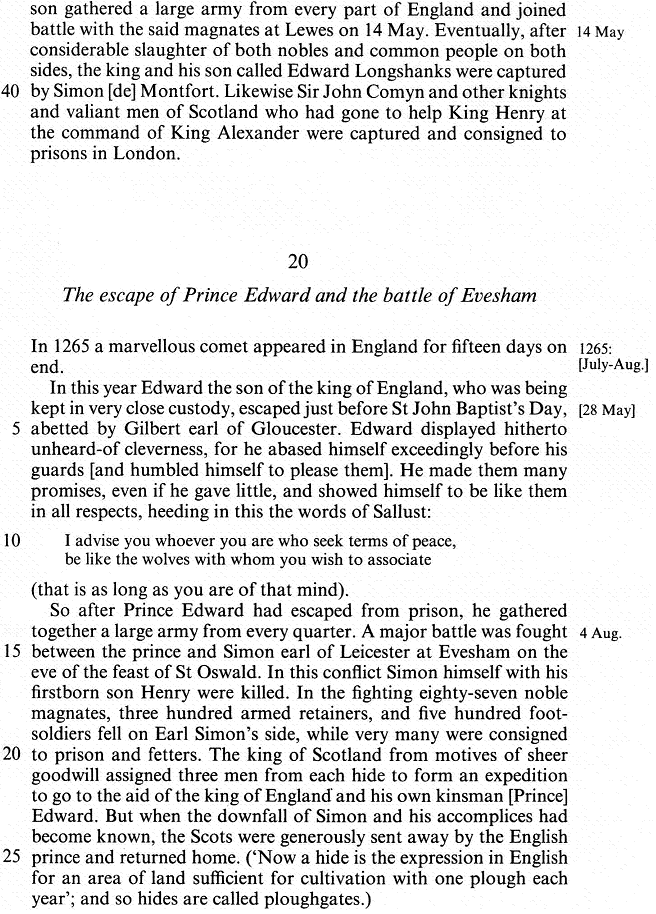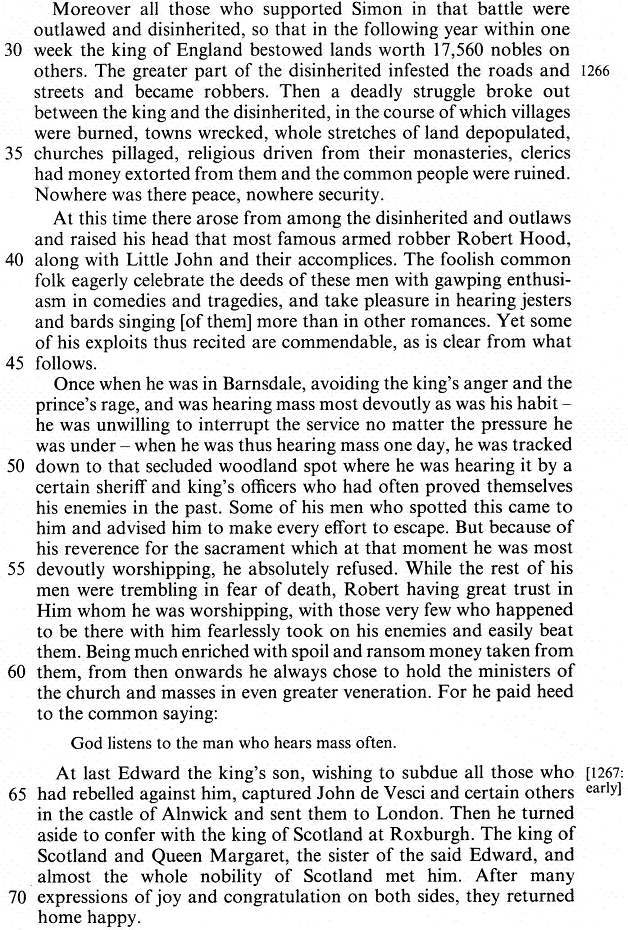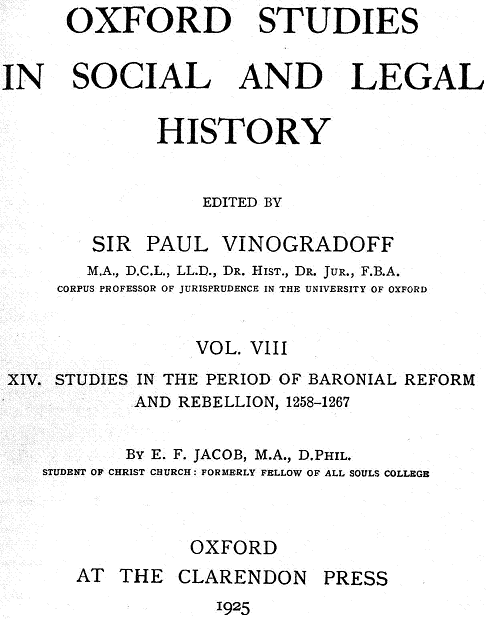
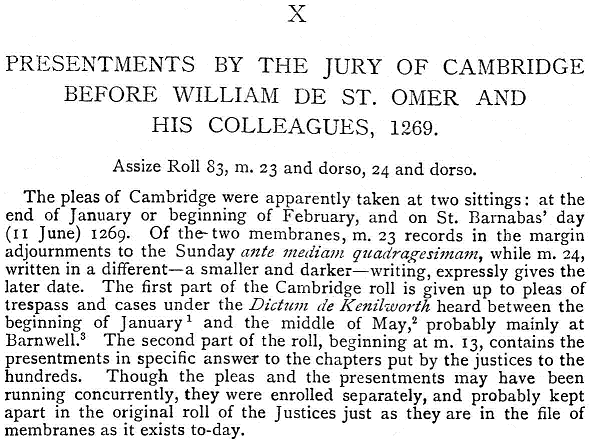
| The Dictum of Kenilworth (issued 31 October, 1266) established the terms of the rebel supporters of Simon de Montfort for ending their resistance against Henry III. It was offered to the rebels at Kenilworth Castle, where they were holding out. One main point was their right to buy back, or pay a fine, for their confiscated lands. After initial resistance, they agreed to the terms, and were given safe conduct in December. Peace was sealed in 1267. |
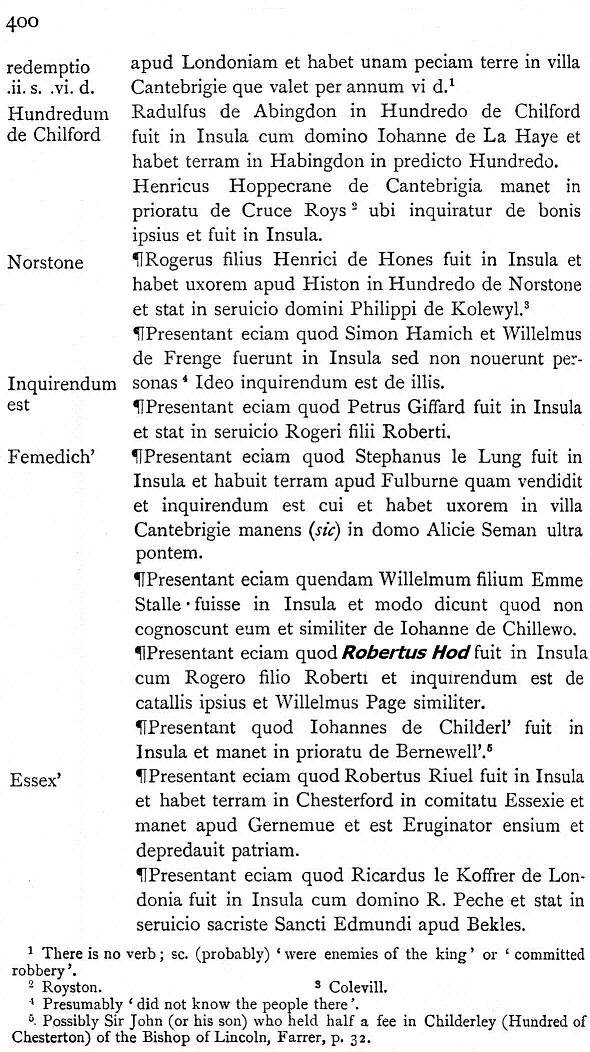

What we appear to have here is a coincidence, a Robert Hod in the Cambridge rolls, among the rebels at the Isle of Ely: ‘Presentation of a summons that Robert Hod was in the Isle with Roger son of Robert and enquiry into the matter of his chattels, and equally to William Page’. This scenario is put into perspective when we look at the description of the baronial rebellion, and the mention of Robin Hood, in the 1440s, by the Scotsman Walter Bower:
| Scotichronicon by Walter Bower in Latin and English |
| General Editor D E R Watt (Aberdeen University Press) |
The Deyville family were actively involved in the baronial rebellion. This article by Oscar De Ville reveals their possible influence on the legend of Robin Hood:

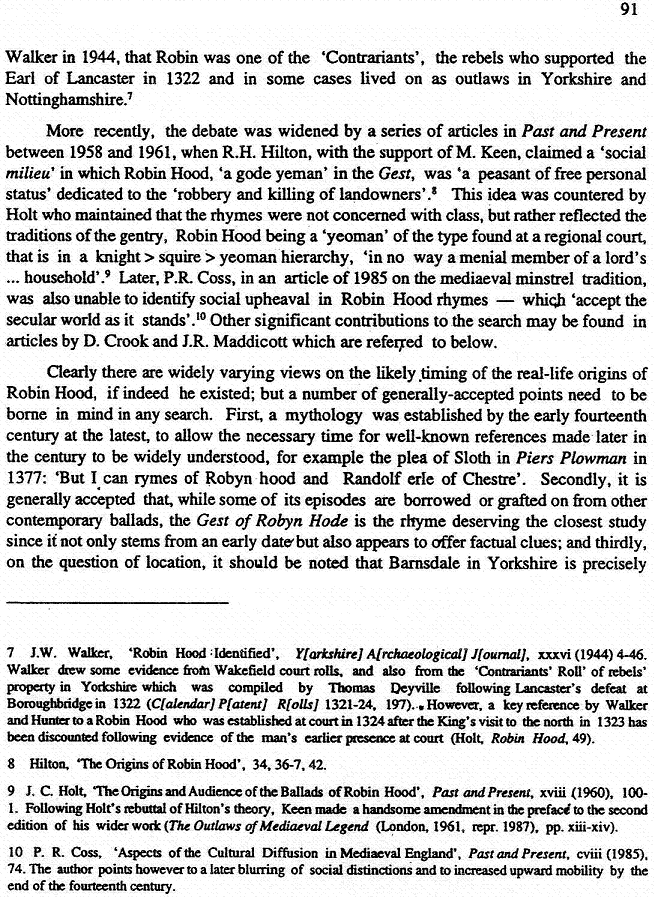
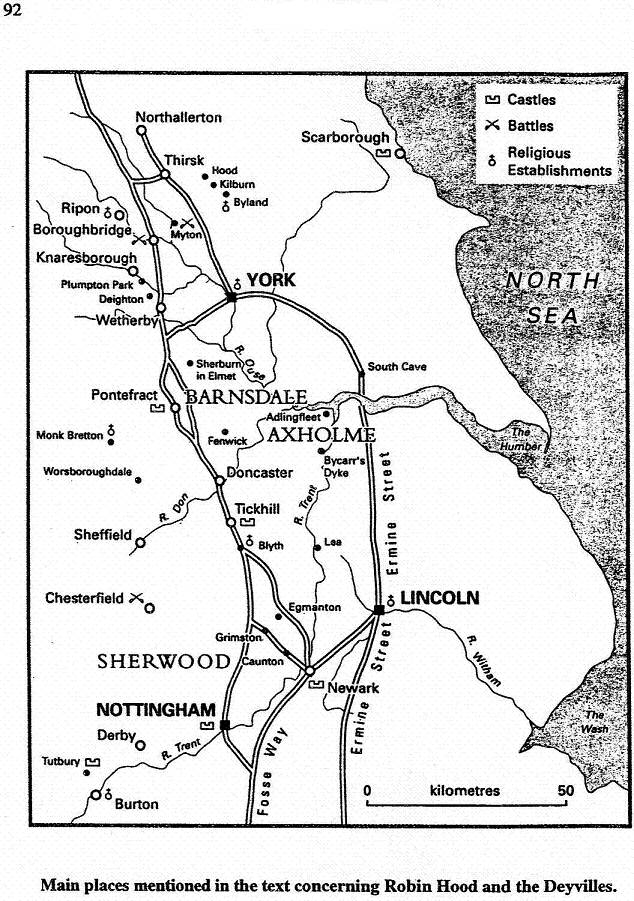
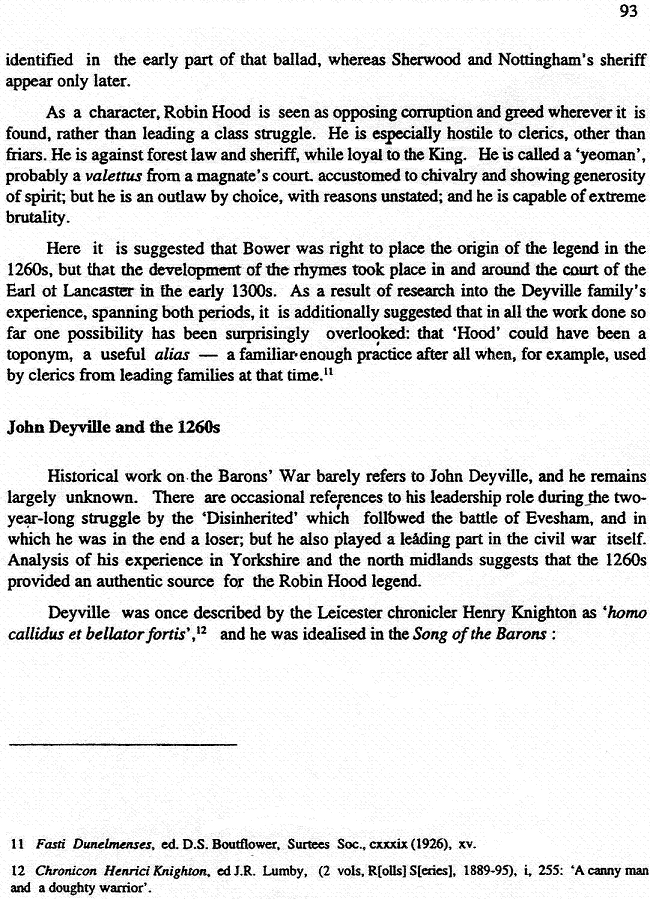

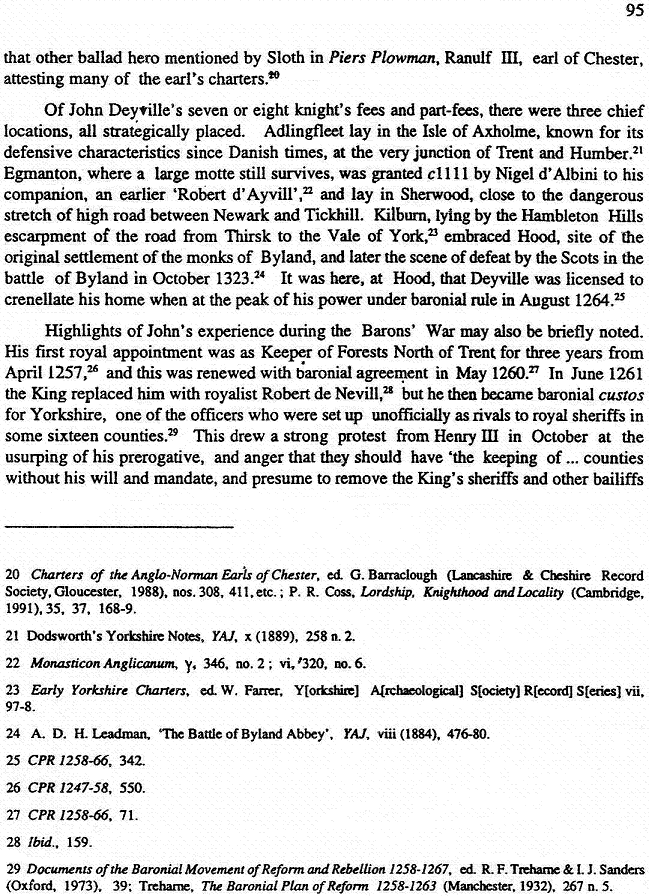
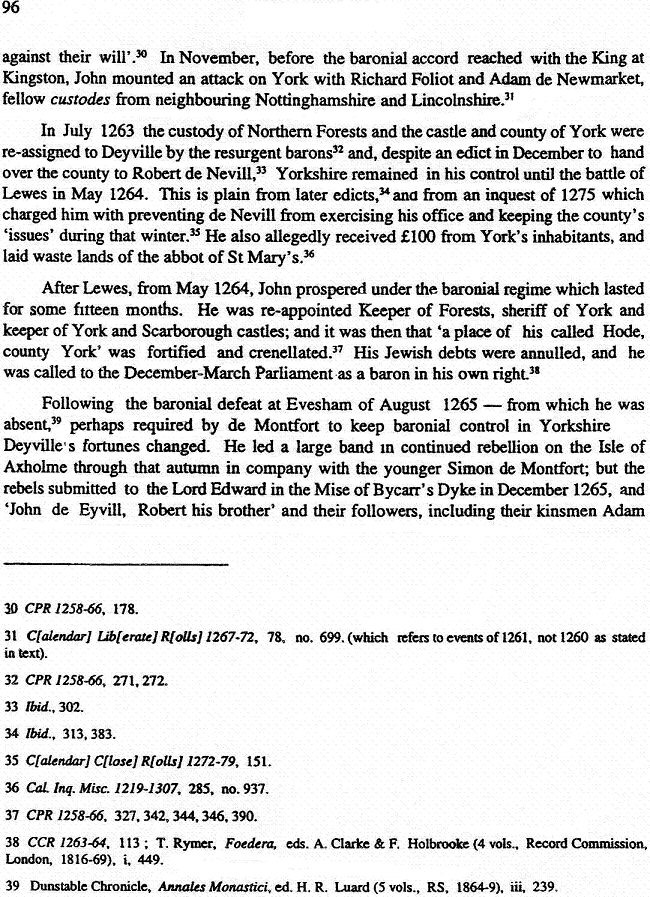
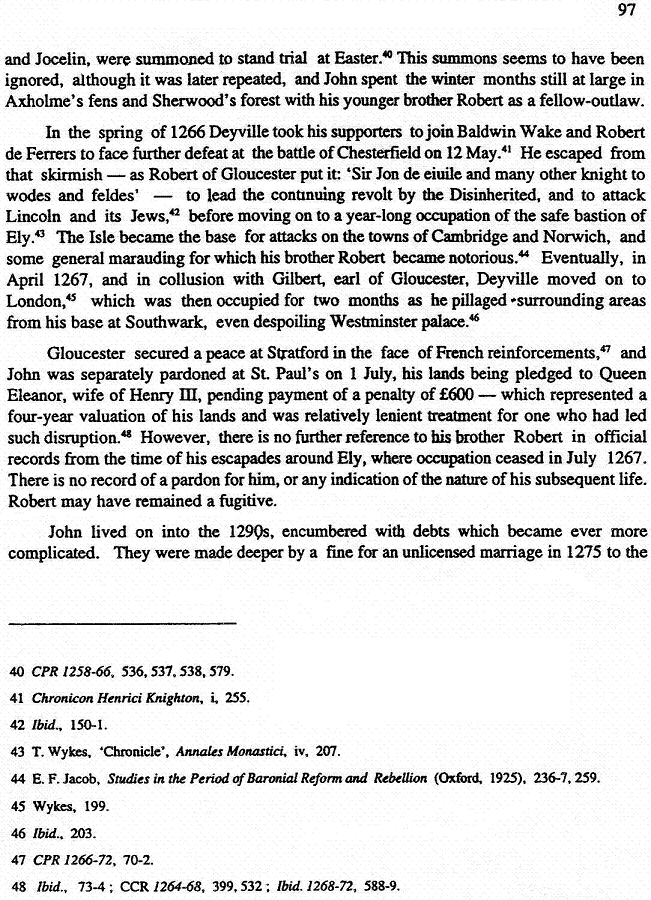
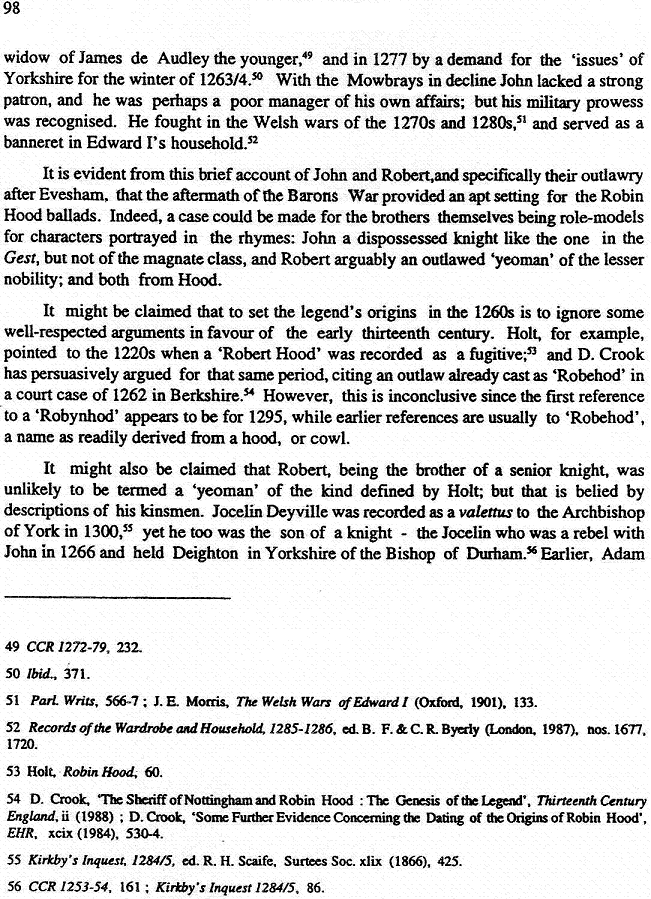
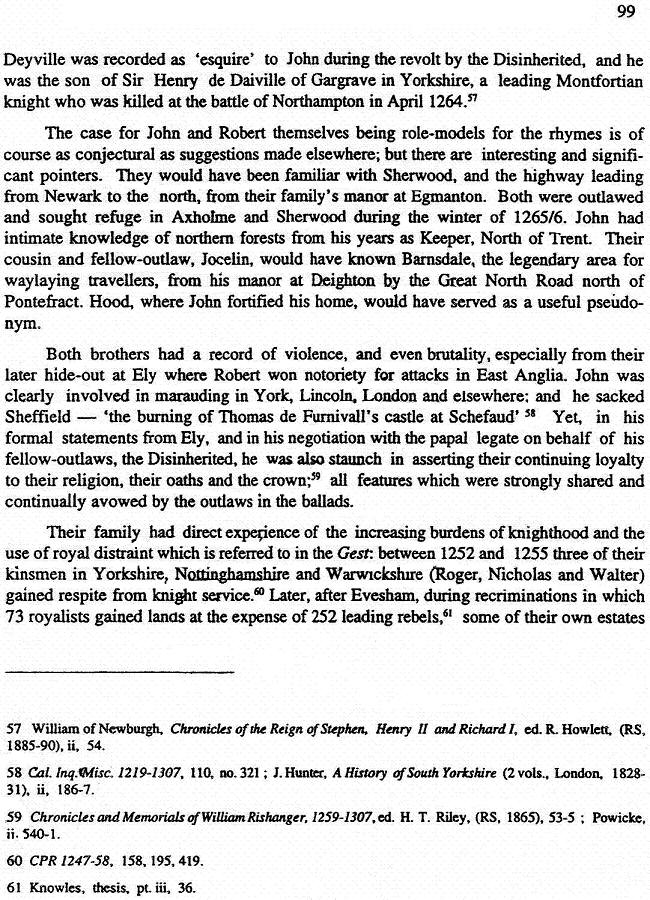
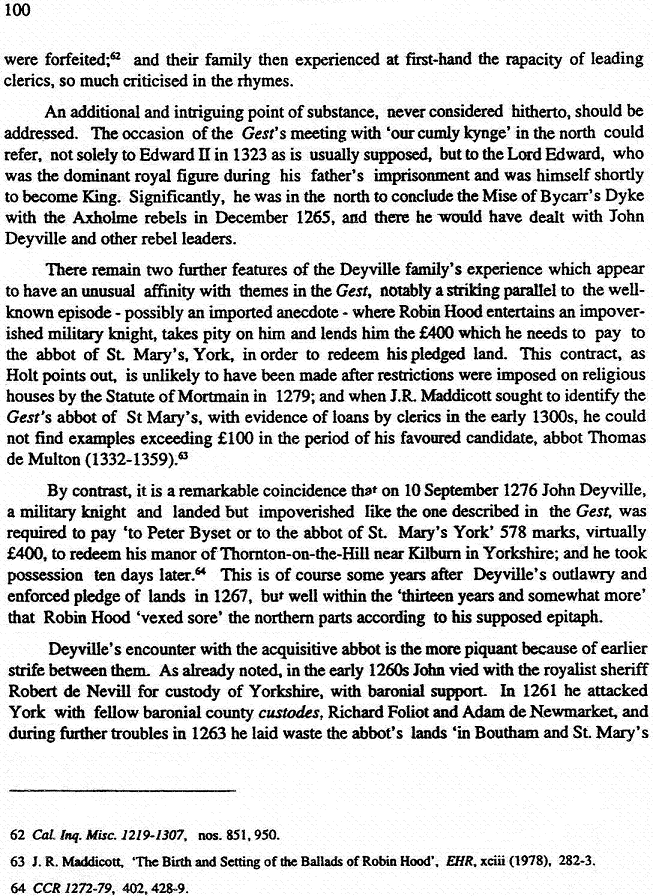
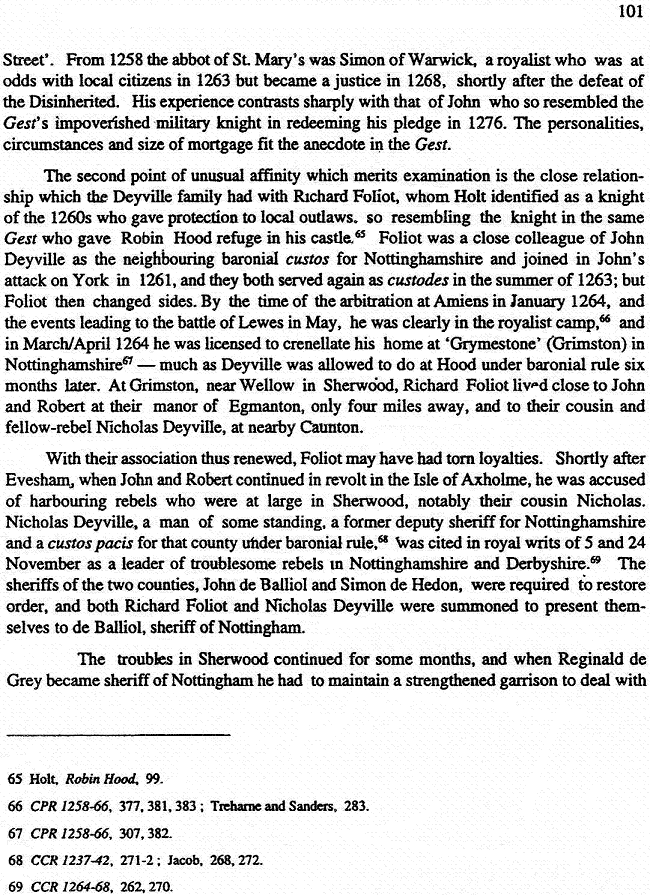

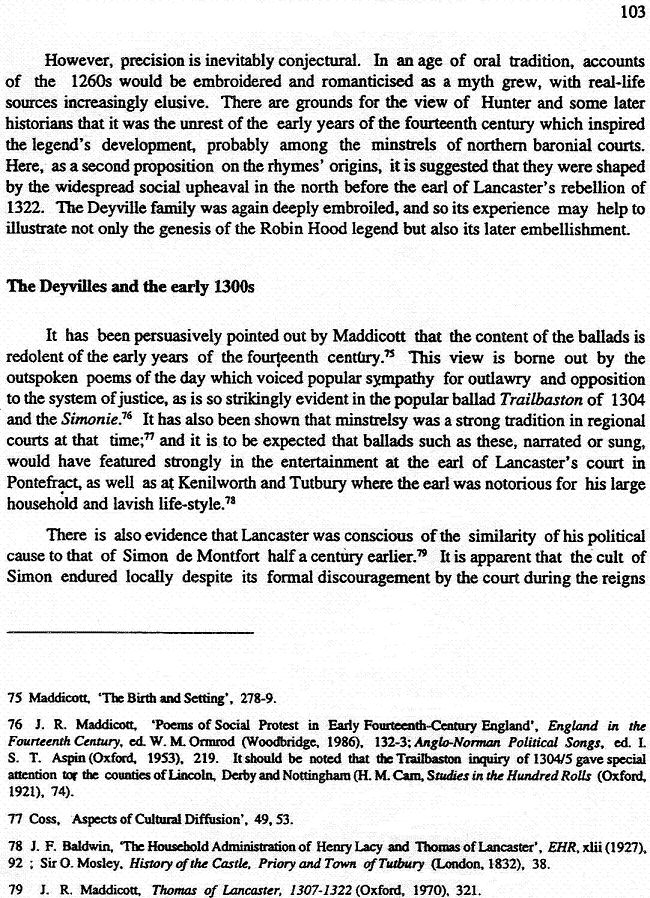
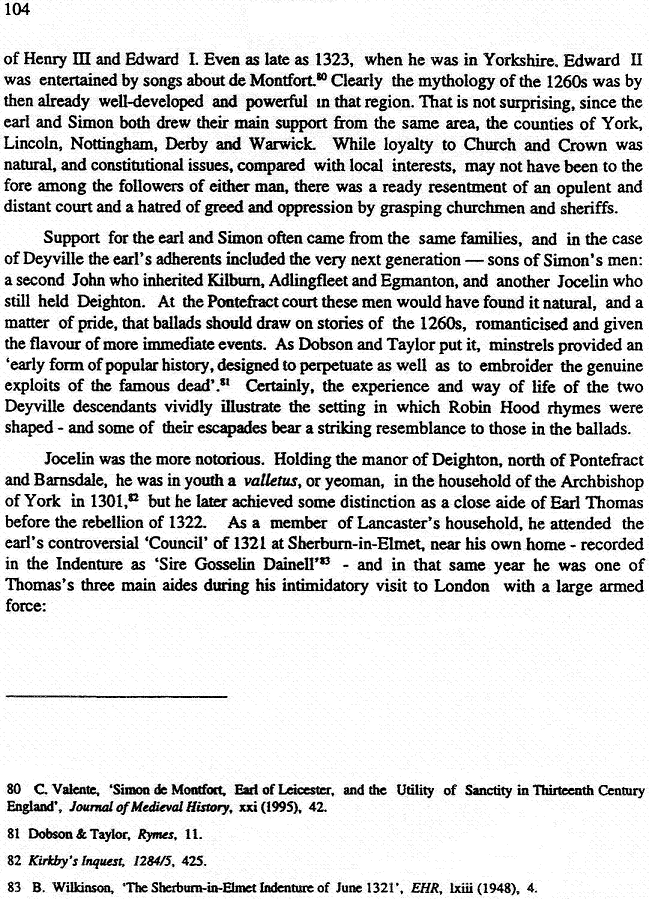
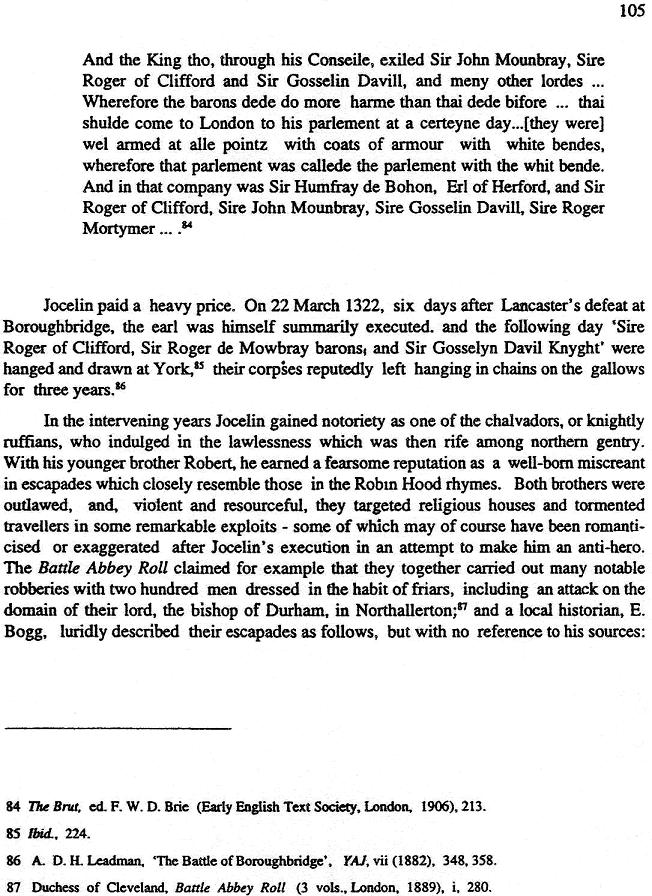

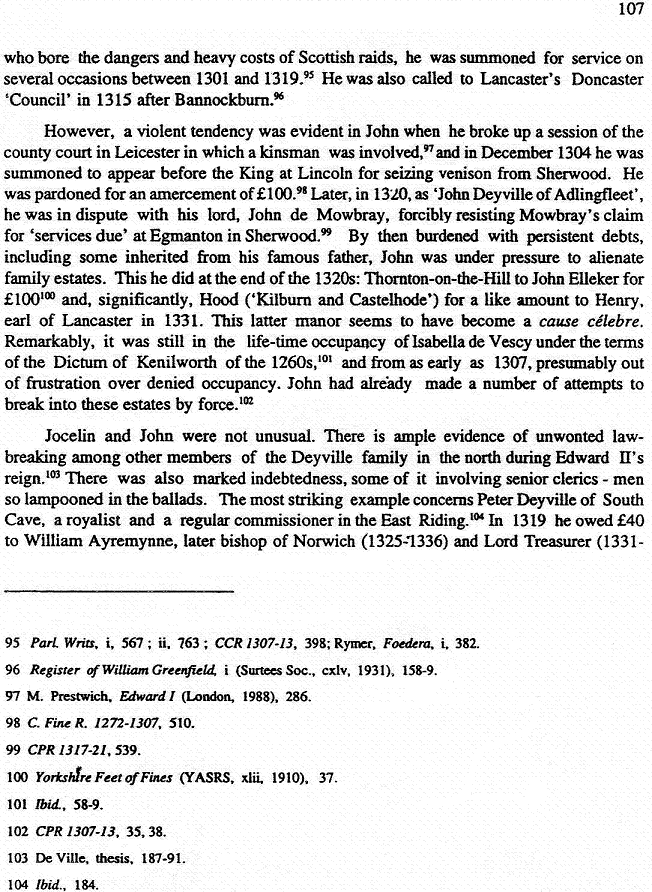
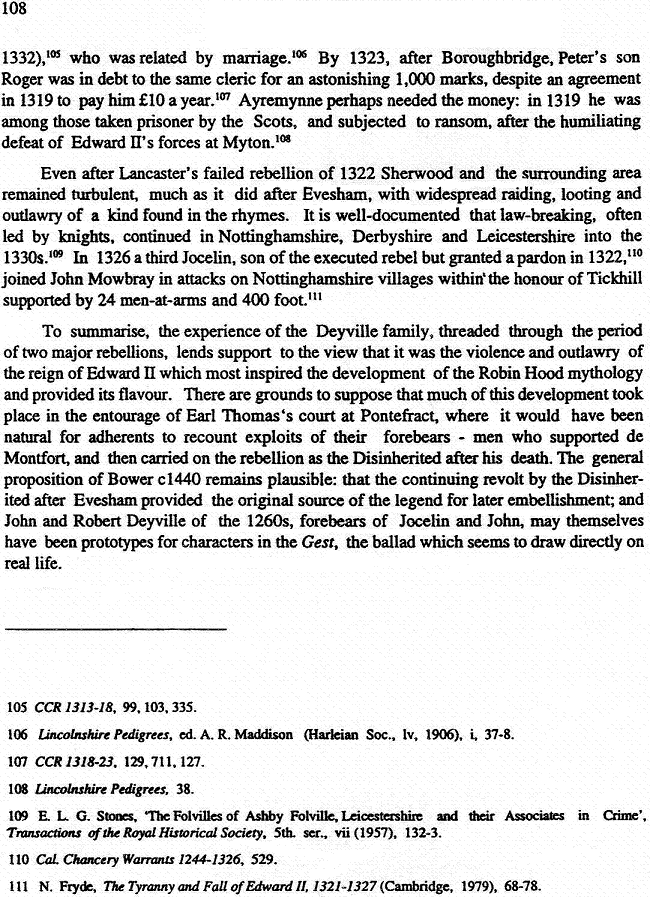
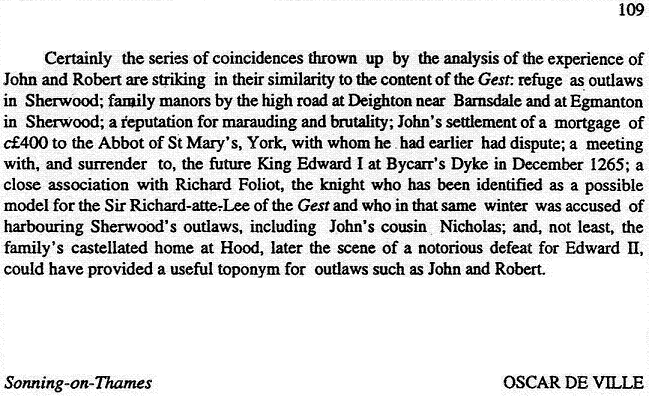

|
